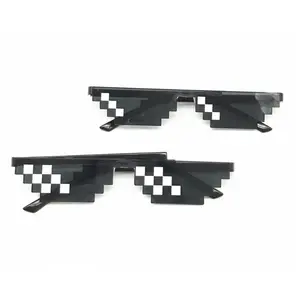Popular in your industry











































































































































































Top categories
About stovetop grills
A stovetop grill is a culinary tool that brings the flavor and technique of outdoor grilling to the convenience of your kitchen. It is designed to be placed over one or more burners on your stove, providing a grilling surface for cooking a variety of foods. These grills are ideal for those who enjoy grilled foods but may not have the space or ability to use a traditional outdoor grill.
Types and Characteristics of Stovetop Grills
Stovetop grills come in various types, each with unique characteristics. There are grill pans for stove top which are single burner grills, perfect for smaller meals or urban kitchens with limited space. Larger griddle for electric stove top models span multiple burners and are ideal for cooking for families or entertaining guests. Specialty types include stove with griddle electric and induction stove grill options, designed for compatibility with modern kitchen appliances. Each type caters to different cooking styles and preferences, from searing steaks to gently grilling vegetables. The stove top bbq grill models are particularly popular for those who crave the smoky flavor of barbecue without the hassle of setting up an outdoor grill. These models often feature non-stick surfaces and are suitable for a variety of foods, including meats, vegetables, and even fruits.
Structure and Operation of Stovetop Grills
The structure of a stovetop grill typically includes a flat or ridged cooking surface, a drip tray to catch excess fat, and sometimes a cover to create an oven-like environment. The cooking surface is heated by the stove's burners, transferring the heat to the food. Some models feature a double-sided design, with a grill on one side and a griddle on the other, enhancing their versatility. The components are designed to work together to mimic the experience of outdoor grilling, complete with grill marks and smoky flavor. High-end models may include additional features such as built-in thermometers for precise temperature control and detachable handles for easier maneuvering and storage.
Materials and Their Properties
The materials used in stovetop grills are chosen for their heat conductivity and durability. Cast iron is a popular choice for its excellent heat retention and the ability to create a natural non-stick surface over time. Stainless steel is valued for its rust resistance and ease of cleaning. Aluminum alloy grills are lightweight and heat up quickly, while carbon steel is a sturdy middle ground between cast iron and stainless steel. Each material impacts the cooking experience and flavor outcome of the food. For example, cast iron can impart a distinct flavor to foods, especially after it has been seasoned and used repeatedly. Stainless steel's non-reactive nature makes it ideal for cooking acidic foods, while aluminum's excellent thermal conductivity ensures quick and even heating.
Business Usages and Applications
In a commercial setting, stovetop grills are invaluable. Restaurants utilize them for quick, efficient cooking with minimal space required. Hotels and catering services opt for portable models like the stove top bbq grill for events where traditional grilling isn't feasible. In retail, supermarkets and department stores demonstrate these grills to showcase their ease of use and versatility, driving sales especially during holiday seasons when indoor cooking is preferred. The use of stovetop grills in commercial kitchens also allows for the expansion of menu options, offering grilled dishes that would otherwise require an outdoor setup. This versatility can lead to increased customer satisfaction and repeat business.
Functions and Tasks
The primary function of a stovetop grill is to cook food with direct heat, simulating the grilling process indoors. They are designed to perform tasks such as searing, browning, and even smoking with the right accessories. Some grills are equipped with lids to allow for roasting and smoking, expanding their functionality beyond simple grilling. The ridged surface of many stovetop grills is perfect for creating char lines on meats and vegetables, which not only adds visual appeal but also enhances flavor through the Maillard reaction.
Distinctive Features and Capabilities
Stovetop grills boast features that set them apart from traditional cookware. A stove top grill for gas stove often has a flame diffuser to distribute heat evenly, preventing hot spots. Reversible surfaces offer dual functionality, with a grill on one side and a flat griddle on the other. Some models include detachable handles and foldable designs for easy storage and portability. Additionally, certain grills come with non-stick coatings to reduce the need for cooking oils and make cleanup a breeze. The unique selling points of these grills often include their ability to deliver outdoor grilling results in any weather, their compatibility with various stove types, and their multipurpose use for cooking a wide range of dishes.
Benefits and Positive Outcomes
Using a stovetop grill provides the benefit of enjoying grilled foods year-round, regardless of weather conditions. They offer a healthier cooking alternative by allowing fat to drip away from the food. Additionally, they save on energy costs compared to heating up a large outdoor grill and are perfect for urban dwellers without access to outdoor spaces. The convenience of a quick setup and the ability to control the cooking temperature with the stove's knobs are also significant advantages. For those looking to reduce their carbon footprint, stovetop grills are an energy-efficient option, as they utilize the existing burners of the stove and do not require charcoal or propane.
How to Use Your Stovetop Grill
To use a stovetop grill, begin by placing it over your stove's burners and preheating it to the desired temperature. Lightly oil the grill surface to prevent sticking. Arrange your food on the grill and cook, turning as necessary. After use, let the grill cool before cleaning. For those new to stovetop grilling, it's important to start with moderate heat to avoid burning the food and to use tongs or spatulas that are safe for non-stick surfaces if applicable.
Choosing the Right Stovetop Grill
When selecting a stovetop grill, consider the size of your stove and the amount of food you plan to cook. For induction stoves, ensure the grill is compatible. Think about the material based on your maintenance preference and the types of food you'll be grilling. If you frequently cook for large groups, a larger grill that covers multiple burners might be the best choice. For those who value convenience, look for features like non-stick surfaces and dishwasher-safe components.
Cleaning and Maintaining Your Stovetop Grill
Cleaning a stovetop grill involves removing food particles after each use. For cast iron grills, use a stiff brush and hot water, avoiding soap to maintain the seasoning. Stainless steel and aluminum grills can be cleaned with soapy water and a sponge. Regular maintenance ensures longevity and performance. It's also advisable to periodically check for any wear on non-stick coatings and to re-season cast iron surfaces to maintain their non-stick properties.
Target Audience and Meeting Needs
The target audience for stovetop grills includes home cooks who enjoy grilling, urban residents without outdoor space, and commercial entities looking for efficient indoor grilling solutions. These grills meet the needs of convenience, flavor, and versatility, appealing to a wide range of preferences and cooking styles. They are particularly popular among health-conscious consumers who appreciate the ability to grill without added fats and among culinary enthusiasts who value the nuanced flavors that grilling imparts to food.






































































